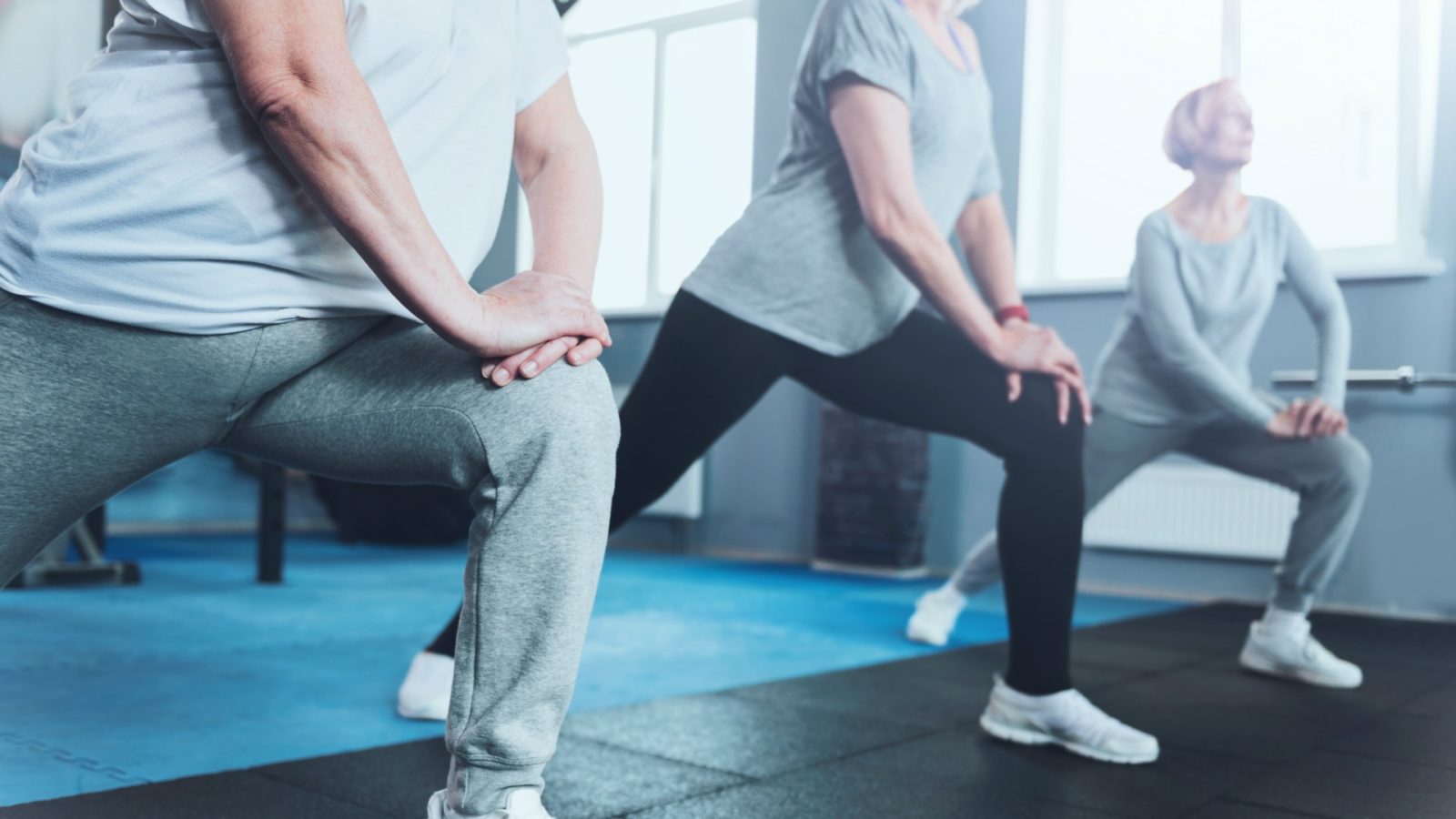
Hot flushes, night sweats, moodiness, irritability and tiredness are all symptoms of menopause — which marks the end of a woman’s reproductive life and coincides with the end of her period. Most women will experience menopause between the ages of 45 and 55 (the average age in Australia is 51).
While there are medical treatments available, some cause serious side effects like bloating, headaches, mood changes and nausea, which is why a natural approach to managing menopause symptoms is becoming more and more popular. Below, we’ve outlined a number of natural methods that could be used to reduce symptoms of menopause without causing more pain. Try one or a combination of these methods and see what works for you — just be sure to talk with your doctor first!
Incorporating strength training exercises into your daily routine offers many benefits, including preventing unwanted weight gain and strengthening your bones, wellness expert Jill Healy-Quintard, who runs Body and Balance, a fitness business, explains.
She says women going through menopause tend to lose muscle mass and gain abdominal fat, adding they can also start to lose bone faster than their body makes it which can lead to osteoporosis — that’s why strength training exercises are so important.
“As women transition into menopause, they experience a reduction in basal metabolic rate [the amount of energy your body burns at rest] which can result in muscle mass changes, such as losing lean muscle mass,” Jill explains. “This can have a negative impact on a woman’s overall health and also lead to the accumulation of unhealthy abdominal fat – a risk factor for some conditions.”
Not sure where to start? Jill recommends introducing bodyweight exercises like squats, lunges, glute and calf raises and wall sits into your daily routine. A quick search of the internet, particularly YouTube, will bring up plenty of demonstrations of how to do these exercises. So how often should you do them? Jill says to aim for at least two times a week to reap the full benefits.
“Other benefits of exercise include potentially reducing the intensity of hot flushes [and] increasing circulatory and respiratory function,” she adds.

We all know that healthy eating comes with a number of benefits like weight loss, better mood and reduced cancer risk, but did you know that following a well-balanced diet may also reduce menopause symptoms? “Eating the right food is an easy way to help combat [menopause symptoms], ideally combined with regular exercise,” Jill says.
She recommends cutting down on saturated fats like milk, cheese and red meat, refined sugars like bread, pastries and white rice and processed foods, and instead, adopting a Mediterranean-style diet. “In other words, eat plenty of fish, vegetables, fruit, good proteins, and balance with limited amounts of carbohydrates like pasta and rice,” Jill says.
She says foods rich in phytoestrogens — plant-based compounds that mimic estrogen in the body (which helps keep your bones strong and healthy) — like tofu, chickpeas, lentils, peas, quinoa and barley, are also good too, adding they can relieve some menopause symptoms.
Jill also recommends reducing common trigger foods like coffee, alcohol and spicy food, especially if you’re experiencing hot flushes and night sweats. “Too much coffee can also contribute to feelings of anxiety or stress, which can trigger menopausal symptoms,” Jill adds.
For those who prefer a more natural approach, there’s evidence that practicing mindfulness can ease many menopause symptoms. Research published in the Journal of the International Menopause Society found women who practice mindfulness have eased symptoms of irritability, anxiety and depression associated with menopause.
Jill recommends incorporating meditation, yoga and breathing exercises into your weekly routine. If you’re just starting out, there are countless meditation and yoga videos available online.

Jill says many women also turn to natural supplements to relieve their menopause symptoms. She says the herb black cohosh, also known as Actaea racemosa, is regarded as one of the most popular herbal medicines when it comes to reducing menopause symptoms. In fact, research published in the journal American Chemical Society found the commonly used herb may reduce hot flushes. Other supplements include probiotics, prebiotics and evening primrose.
“Actaea racemosa is regarded as one of the most important herbal medicines in helping support the management menopause transition symptoms, with a long history of its use,” Jills says. “[In fact], Ze450, a clinically proven extract of Actaea racemose, has been shown to significantly relieve a [variety] of menopause symptoms.”